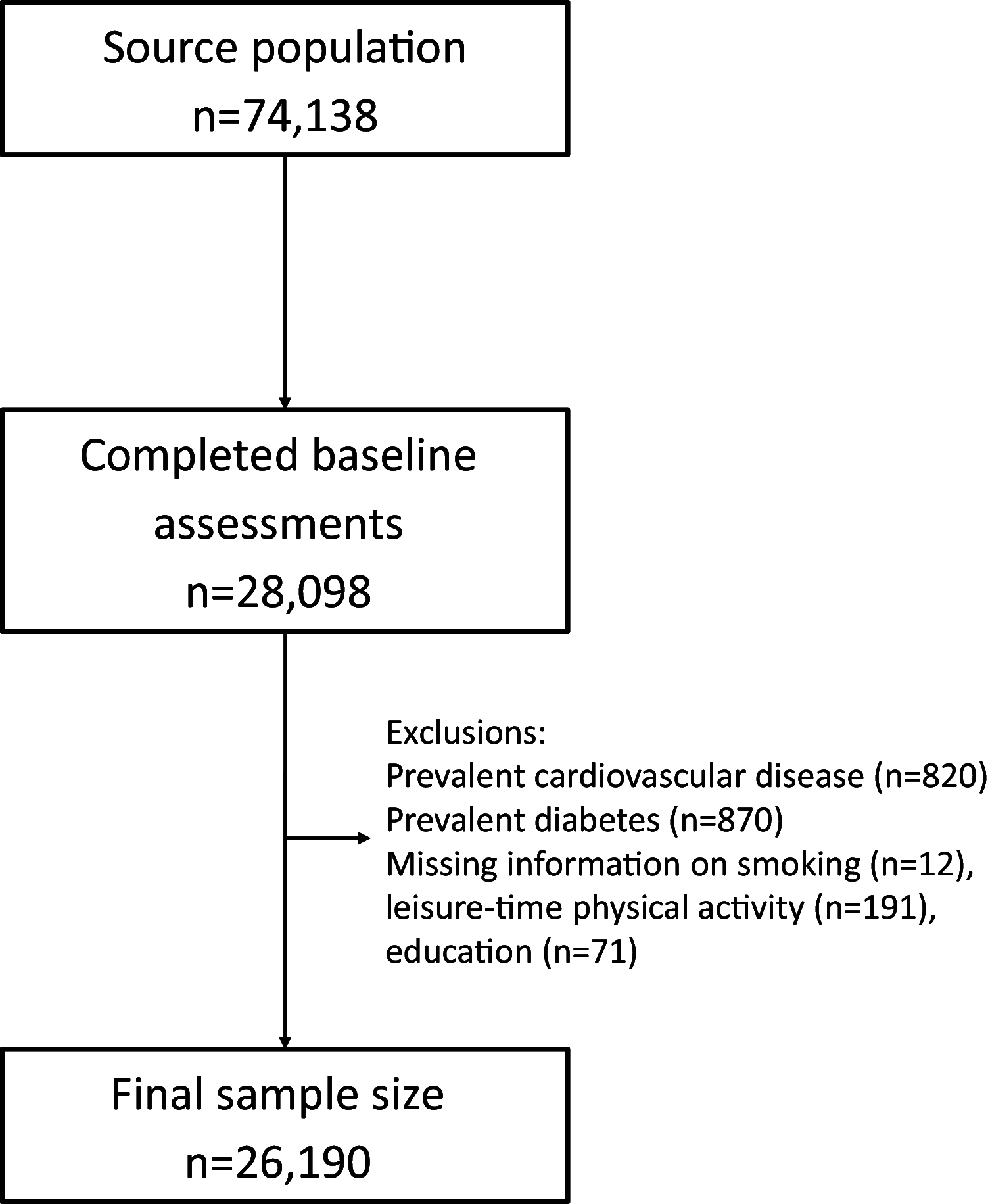High consumption of dairy products and risk of major adverse coronary events and stroke in a Swedish population
- PMID: 37671505
- PMCID: PMC10784127
- DOI: 10.1017/S0007114523001939
High consumption of dairy products and risk of major adverse coronary events and stroke in a Swedish population
Abstract
The association between the consumption of dairy products and risk of CVD has been inconsistent. There is a lack of studies in populations with high intakes of dairy products. We aimed to examine the association between intake of dairy products and risk of incident major adverse coronary events and stroke in the Swedish Malmö Diet and Cancer cohort study. We included 26 190 participants without prevalent CVD or diabetes. Dietary habits were obtained from a modified diet history, and endpoint data were extracted from registers. Over an average of 19 years of follow-up, 3633 major adverse coronary events cases and 2643 stroke cases were reported. After adjusting for potential confounders, very high intakes of non-fermented milk (>1000 g/d) compared with low intakes (<200 g/d) were associated with 35 % (95 % CI (8, 69)) higher risk of major adverse coronary events. In contrast, moderate intakes of fermented milk (100-300 g/d) were associated with a lower risk of major adverse coronary events compared with no consumption. Intakes of cheese (only in women) and butter were inversely associated with the risk of major adverse coronary events. We observed no clear associations between any of the dairy products and stroke risk. These results highlight the importance of studying different dairy foods separately. Further studies in populations with high dairy consumption are warranted.
Keywords: Cohort; Coronary events; Dairy products; Milk; Stroke.
Figures



Similar articles
-
Dairy products and its association with incidence of cardiovascular disease: the Malmö diet and cancer cohort.Eur J Epidemiol. 2011 Aug;26(8):609-18. doi: 10.1007/s10654-011-9589-y. Epub 2011 Jun 10. Eur J Epidemiol. 2011. PMID: 21660519
-
Nonfermented milk and other dairy products: associations with all-cause mortality.Am J Clin Nutr. 2017 Jun;105(6):1502-1511. doi: 10.3945/ajcn.116.140798. Epub 2017 May 10. Am J Clin Nutr. 2017. PMID: 28490510 Free PMC article.
-
Substitutions between dairy products and risk of stroke: results from the European Investigation into Cancer and Nutrition-Netherlands (EPIC-NL) cohort.Br J Nutr. 2019 Jun;121(12):1398-1404. doi: 10.1017/S0007114519000564. Epub 2019 Mar 14. Br J Nutr. 2019. PMID: 30868976
-
Dairy Foods: Is Its Cardiovascular Risk Profile Changing?Curr Atheroscler Rep. 2022 Jan;24(1):33-40. doi: 10.1007/s11883-022-00984-1. Epub 2022 Jan 19. Curr Atheroscler Rep. 2022. PMID: 35044629 Review.
-
Milk and Dairy Product Consumption and Cardiovascular Diseases: An Overview of Systematic Reviews and Meta-Analyses.Adv Nutr. 2019 May 1;10(suppl_2):S164-S189. doi: 10.1093/advances/nmy099. Adv Nutr. 2019. PMID: 31089735 Free PMC article. Review.
Cited by
-
Fermented dairy products intake and stroke risk: analyses of NHANES 2007-2018 data.Front Nutr. 2025 Jul 21;12:1593174. doi: 10.3389/fnut.2025.1593174. eCollection 2025. Front Nutr. 2025. PMID: 40761346 Free PMC article.
-
Dairy intake, plasma metabolome, and risk of type 2 diabetes in a population-based cohort.Am J Clin Nutr. 2025 May;121(5):1137-1148. doi: 10.1016/j.ajcnut.2025.02.023. Epub 2025 Apr 3. Am J Clin Nutr. 2025. PMID: 40318879 Free PMC article.
-
The impact of dietary interventions on cardiometabolic health.Cardiovasc Diabetol. 2025 May 31;24(1):234. doi: 10.1186/s12933-025-02766-w. Cardiovasc Diabetol. 2025. PMID: 40450314 Free PMC article. Review.
References
-
- Mensink RP (2016) Effects of Saturated Fatty Acids on Serum Lipids and Lipoproteins: A Systematic Review and Regression Analysis. Geneva: World Health Organization.
-
- Alexander DD, Bylsma LC, Vargas AJ, et al. (2016) Dairy consumption and CVD: a systematic review and meta-analysis. Br J Nutr 115, 737–750. - PubMed
-
- Nordic Council of Ministers (2014) Nordic Nutrition Recommendations 2012 – Integrating Nutrition and Physical Activity, 5th ed. Copenhagen: Nordic Council of Ministers.
Publication types
MeSH terms
Substances
LinkOut - more resources
Full Text Sources
Medical

